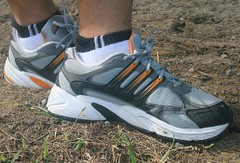DIGESTION IN THE MOUTH
- Once ingested, the food is first broken down into smaller pieces (physical digestion - chewing action with the help of the teeth) so as to increase the surface area and this in turn facilitates chemical digestion.
- The presence of food in the mouth triggers the salivary glands to secrete saliva.
- Saliva contains water, mucus and the enzyme, amylase.
- The water helps to soften the food whereas the mucus lubricates the food (bolus) so that the bolus can be swallowed into the oesophagus.
- The enzyme, amylase digests starch in the food into maltose. Since the bolus is not kept in the mouth for a very long time, some of the starch is still remain undigested.
- REMEMBER: Only starch is digested in the mouth (though not all) whereas proteins and fats are not, since there are no enzymes in the saliva that can digest them.

- The bolus is then swallowed into the oesophagus through the pharynx.
- Swallowing action causes the epiglottis to close the mouth of the trachea. This prevents food from entering the trachea during swallowing.
DIGESTION IN THE OESOPHAGUS
- No chemical digestion occurs in the oesophagus because there are no enzymes produced by the oesophagus. However starch digestion from the mouth continues as the bolus moves down the oesophagus. But not all the starch is digested as the bolus only stays in the oesophagus very briefly.
- Physical digestion continues as the circular and longitudinal muscles contract and relax alternately. This breaks the bolus further physically and at the same time helps to move the bolus down into the stomach.
